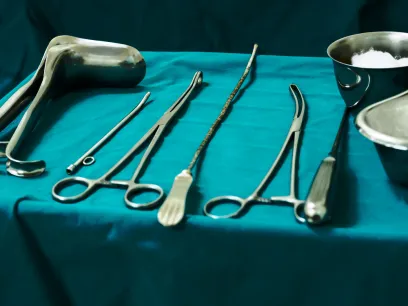When Improper Delivery Tools Lead to Birth Injuries

Injured?
When labor becomes difficult or prolonged, doctors may use tools like forceps or a vacuum extractor to assist with delivery. In skilled, cautious hands, these tools can make all the difference. But when used improperly or too forcefully, they can cause lasting harm to a newborn.
No parent expects their baby to suffer avoidable injuries at birth. If the negligent use of delivery instruments harmed your child, it could be a case of medical malpractice. You may have the right to seek compensation for the pain, medical costs, and long-term consequences your family now faces.
What Are Forceps and Vacuum Extractors?
Forceps are medical instruments that resemble large, curved tongs. During a difficult vaginal delivery, doctors may use them to gently guide the baby’s head out of the birth canal. A vacuum extractor works a bit differently, using suction applied to the baby’s scalp to assist with delivery during contractions.
These tools are typically used when:
- Labor has stalled or isn’t progressing
- The baby shows signs of distress, such as a dropping heart rate
- The mother is too fatigued to continue pushing
- An emergency requires the baby to be delivered quickly
When used correctly, both tools can be life-saving. But when used with poor judgment or excessive force, they can cause serious and preventable injuries. That’s why skilled handling is absolutely essential.
Examples of Improper Use of Forceps and Vacuum Extractors
Forceps and vacuum extractors are only meant to assist with delivery when medically necessary, not to force it. When used too early, too aggressively, or by someone without the proper training, these tools can do more harm than good.
Improper use may include:
- Applying excessive pressure to the baby’s head or neck
- Pulling while the baby is in the wrong position
- Using the tool during an incorrect stage of labor
- Using the tool when the baby is too high up in the birth canal
- Attempting multiple failed vacuum extractions, also known as Pop-Offs
- Switching between the vacuum and the forceps in the same delivery
When these mistakes happen, the baby may suffer serious trauma, sometimes with lifelong consequences. Proper training and judgment are non-negotiable when using these devices.
Failing to Get Informed Consent Before Using Forceps or a Vacuum
While forceps or a vacuum may be necessary in an emergency, they are often used electively to help facilitate delivery. In these situations, the delivering provider must obtain the patient’s full informed consent before proceeding.
Consent is typically obtained through forms signed upon arrival. However, if the provider decides to use forceps or a vacuum, they must specifically explain the risks associated with these devices, the risks of not using them, and any alternative options, such as a C-section.
Too often, providers skip this step, assuming the mother would not choose a C-section. In reality, many mothers might opt for one if they understood it could substantially reduce the risk of injury to their baby.
Birth Injuries Linked to Improper Tool Use
Injuries from forceps or vacuum extractors can range from mild to life-altering. While some may heal over time, others require long-term treatment or result in permanent disabilities.
Common injuries include:
- Skull fractures
- Brain bleeds (intracranial hemorrhage)
- Brachial plexus injuries (affecting movement in the arms)
- Facial nerve damage or paralysis
- Seizures
- Cerebral palsy
Depending on the severity, your child may need surgery, physical therapy, or lifelong medical support. And all of it may trace back to one moment of poor judgment, when the right tool was used the wrong way, or placed in the wrong hands entirely.
Recognizing Negligence During Assisted Deliveries
Not every birth injury is the result of medical negligence. However, when forceps or vacuum extractors are used without proper care or in situations where safer alternatives existed, that may constitute a serious breach of the medical standard.
Examples of negligent use include:
- Using forceps or a vacuum when a C-section would have been the safer choice
- Applying excessive force that leads to visible trauma
- Ignoring signs of fetal distress or delaying necessary intervention
- Failing to monitor the baby and mother closely during delivery
These aren’t just mistakes; they represent a failure to provide the standard of care every patient is entitled to. And if your baby’s injury could have been avoided, you may be entitled to pursue legal action against those responsible.
Potential Compensation in a Birth Injury Lawsuit
The impact of a birth injury often reaches far beyond the initial trauma. It can create lasting emotional, physical, and financial burdens for your entire family. A successful lawsuit can provide crucial support as you navigate these challenges.
If medical negligence caused your child’s injury, you may be entitled to recover compensation for:
- Current and future medical expenses
- Ongoing therapy, rehabilitation, or special education
- Pain and suffering
- Emotional distress
- Loss of future earning capacity for your child
- Long-term care and home modification costs
In tragic cases where the injury leads to the infant’s death, surviving parents may also be able to pursue a wrongful death claim.
No amount of money can undo what happened, but compensation can help your family move forward with the resources you need.
Get the Answers You Deserve
When something goes wrong during delivery and your baby is harmed by a tool meant to help, you deserve honest answers. You trusted your medical team to act in your baby’s best interest, and if they failed you, you have every right to hold them accountable.
Taking legal action isn’t just about justice. It’s about making sure your child receives the care, support, and resources they need for a brighter future.
To get started, please share your story with us by filling out our free case review form today.

We've got your back
Injured?
Not sure what to do next?
We'll guide you through everything you need to know.

